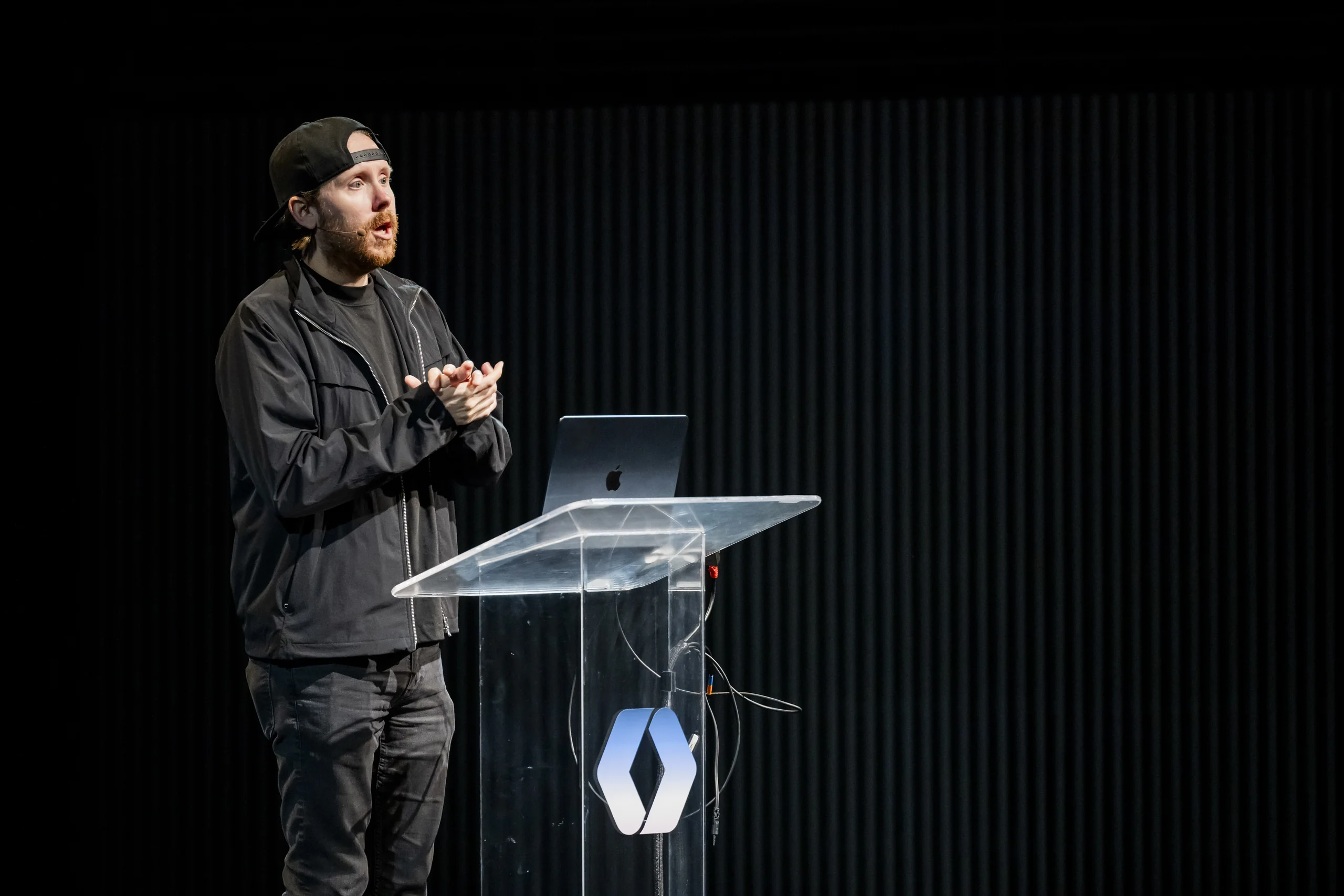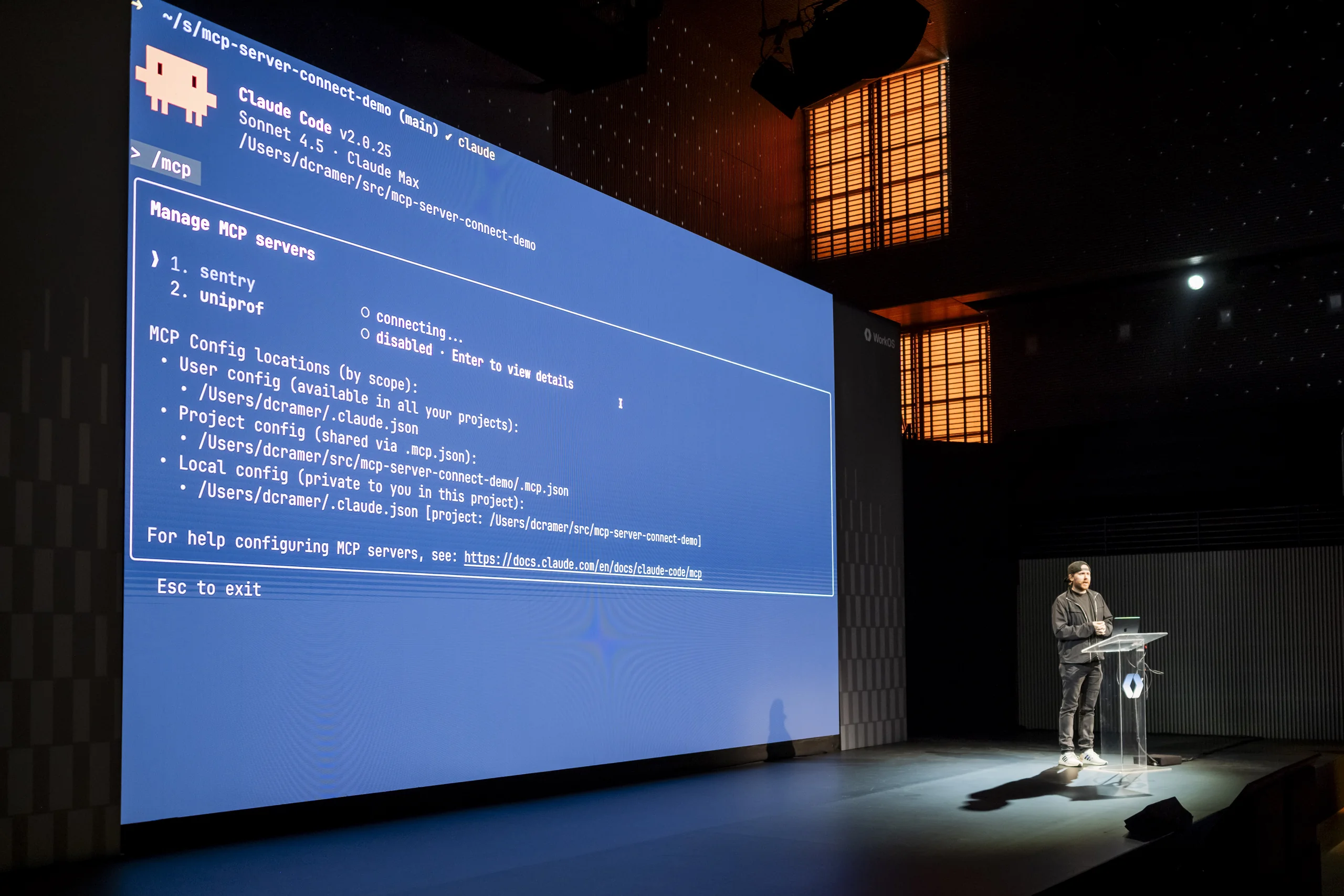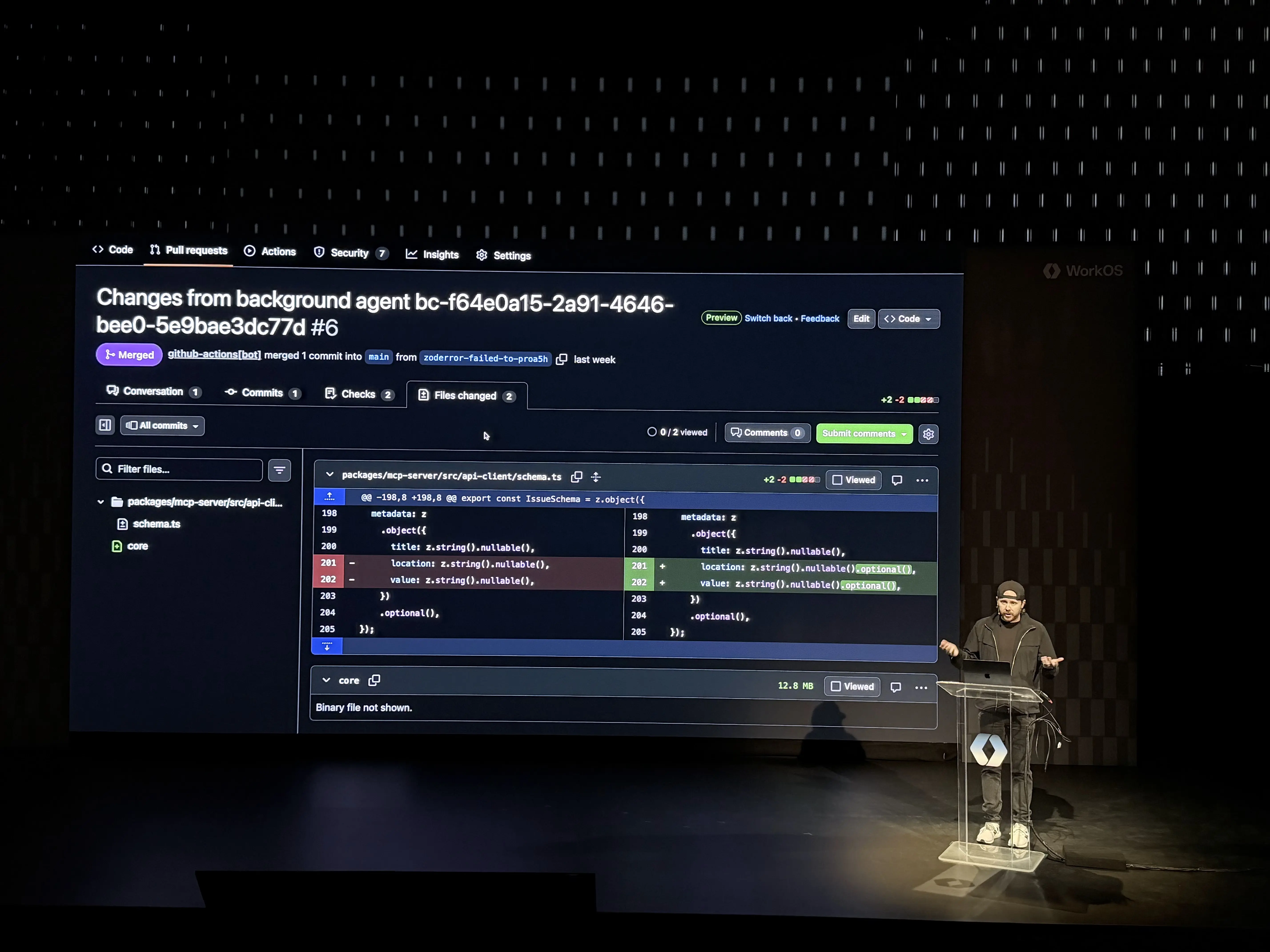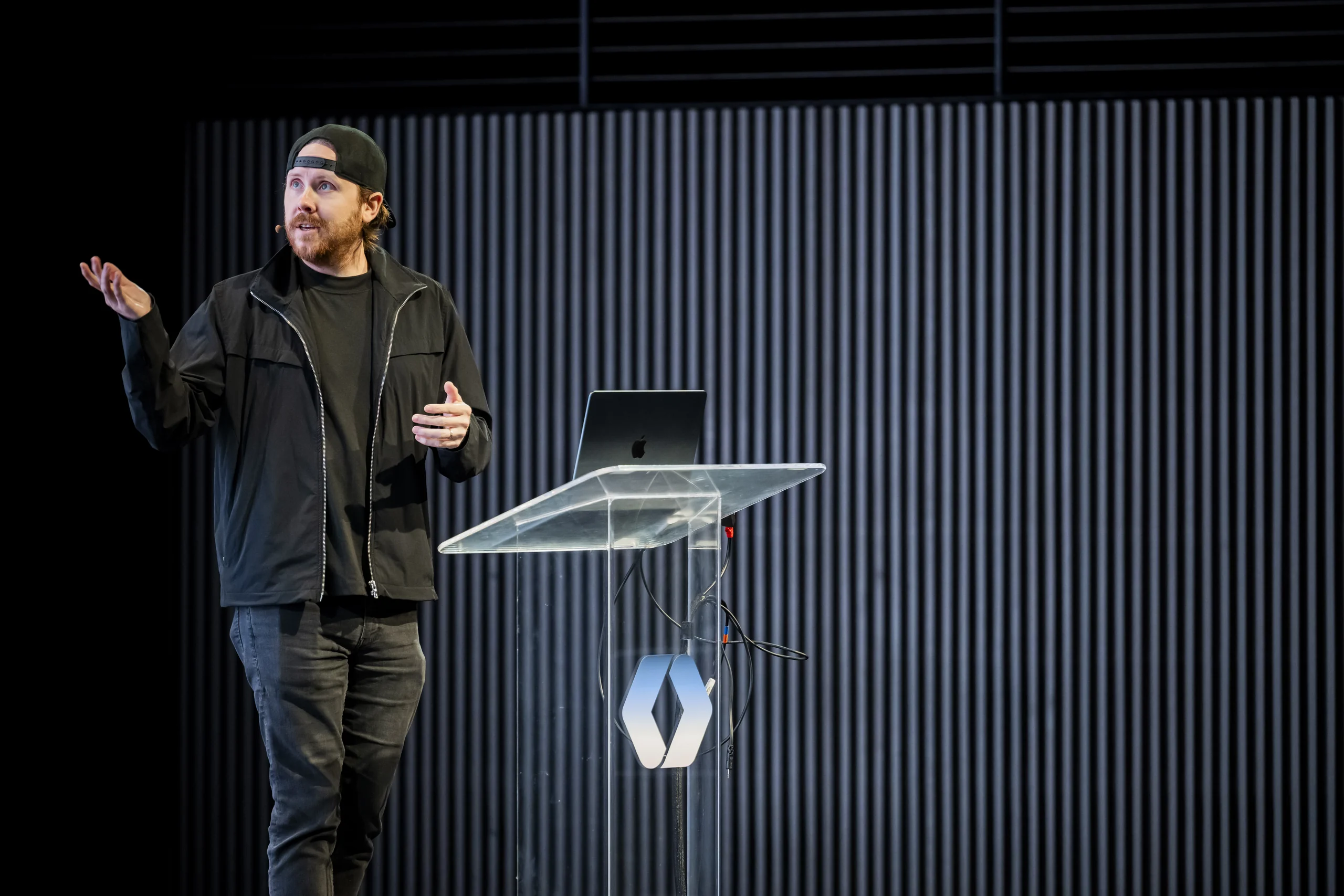Sentry's Lightning Demo: When AI Meets Error Resolution
At Enterprise Ready Conference 2025, Sentry co-founder David Cramer demoed the company's ambitious leap from detecting bugs to fixing them with AI-powered error resolution and automated remediation.
This post is part of our ERC 2025 Recap series. You can read our full recap post here.
At this year's Enterprise Ready Conference, Sentry co-founder and CPO David Cramer took the stage for the final lightning demo—a fitting closer from a company that has spent over a decade at the fault line of software reliability. Sentry is already a household name for developers who live in their error dashboards, but Cramer's presentation hinted at something more ambitious: not just detecting and diagnosing bugs, but fixing them.

From Detection to Remediation
Cramer began in classic Sentry fashion—with humor about live demos that always break at the worst moment—and then pivoted into the heart of the company's latest R&D. Sentry has long helped teams surface and understand production issues. But Cramer asked a bigger question: what if the platform could not only identify the root cause of an error, but also propose (and eventually implement) the fix?
It's a bold goal. As he put it, "We used to say we help you find bugs. Now we're wondering—what if we could fix them?" What followed was a quick dive into Sentry's experiments with large language models and their ability to reason across massive, interconnected traces of runtime data.
LLMs as Context Engines
Modern codebases generate oceans of telemetry: stack traces, spans, and logs that reveal symptoms but rarely intent. Sentry's new approach uses LLMs to connect those dots. Instead of showing a developer a wall of JavaScript error output—"a key is invalid in a stack trace"—the system can now analyze related traces and the codebase itself to infer what should have happened. That reasoning powers what Cramer called "root cause summaries": concise, human-readable explanations of why something broke.

Because Sentry already has deep visibility into both application behavior and source context, it's uniquely positioned to feed those signals into an LLM for richer insights. Cramer demonstrated how, by inspecting the full call graph, the model could determine that an invalid schema was the underlying issue and even suggest a fix.
From Insight to Action
The leap from analysis to remediation came next. Sentry's prototype can now forward structured context—trace data, code snippets, and root-cause hypotheses—to external coding agents such as Cursor.
Those agents then generate a potential fix as a pull request. In the demo, the system automatically identified that a field should be nullable, generated a patch, and submitted a PR. "I've actually got this project wired up to auto-merge green builds and deploy them," Cramer joked. "I wouldn't recommend that in production, but it's fun to see what happens."

While still experimental, this glimpse into AI-assisted remediation underscores Sentry's evolving role in the developer workflow. It's no longer just the first place engineers look when things go wrong—it may soon be the first system that helps them make things right.
A Veteran Still Innovating
As Michael Grinich noted, Sentry isn't a new startup chasing hype; it's an established player reinventing its space through AI. The company's steady march toward self-healing systems—bridging observability, reasoning, and action—encapsulated a major theme of ERC 2025: enterprise software maturing into a world where AI doesn't replace engineers, but augments them with sharper, faster context.

Sentry's demo closed the session on an appropriately meta note: a tool built to catch failures showing us that failure itself is data—and with the right intelligence layered on top, even a crash can lead directly to progress.

Read our full ERC 2025 recap post here.